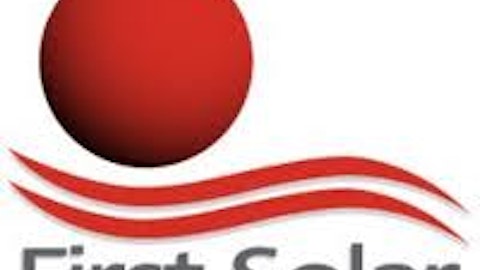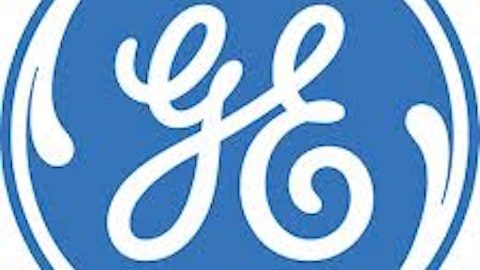In two previous articles, I’ve examined how financial institutions and big data companies like Apple and Google are working with solar power. This, the third article in the series, examines how the U.S. military, the largest consumer or oil and energy in the world, is incorporating solar power into their various operations.
Following orders
According to 10 USC § 2911, the Department of Defense is required to produce or procure at least 25% of the total energy required to run their facilities by renewable energy sources by 2025 and every year thereafter. On their way towards meeting that target, the Department of Defense is expected to add 58% of solar power capacity between now and 2017.
The military believes that it is critical to establish energy security and assert energy independence, thereby insuring that natural disasters, enemy actions, and a variety of other factors don’t compromise their ability to succeed in performing critical missions in combat zones.
In adopting solar solutions, the military forges private partnerships to develop and finance the partnerships. According to the Solar Energy Industries Association, or SEIA, two of the three types of structures are Power Purchase Agreements and Energy Savings Performance Contract. Below are several case studies that demonstrate these partnerships.
Anchors aweigh
The SEIA recognizes the value of PPAs for the military as such, “The military signs a contract to purchase the energy produced by the solar installation at a price that is below local utility rates, which can save the DOD and taxpayers millions of dollars over the life of the system.”
There are many examples of these types of partnerships that have already been developed. One example is China Lake Naval Air Weapons Station. Developed and constructed by SunPower Corporation (NASDAQ:SPWR), the 14-megawatt project was completed in October 2012 and is the Navy’s largest project to date. The solar farm is expected to yield savings of $13 million over the life of the 20-year lease agreement.
Into the wild blue yonder
The biggest energy consumer in the military, the Air Force, plans to produce 1 gigawatt of renewable energy by 2016. Additionally, solar power will account for 70% of all new renewable capacity by 2017.

Another example of a PPA is demonstrated by the Air Force, who has worked with SolarCity Corp (NASDAQ:SCTY) to provide Hickam Air Force Base in Honolulu, Hawaii with 3.4 MW of power for the 2,000 home community. Currently, plans are being reviewed to potentially augment that level and bring the power production up to 5.5 MW.
SolarCity Corp (NASDAQ:SCTY) also has projects in development at Los Angeles Air Force Base, and Peterson and Schriever Air Force Bases in Colorado.
Army Strong
In addition to implementing solar solutions into tactical operations, such as with the Sniper Detection System, “Firefly,” the Army is making use of solar power in the U.S. Implemented by Siemens AG (ADR) (NYSE:SI), the White Sands Missile Range project is an example of a Energy Savings Performance Contract that was awarded and managed by the U.S. Army Engineering and Support Center.
Over the life of the 25-year project, Siemens AG (ADR) (NYSE:SI) will operate and maintain the solar farm and then sell all of the generated energy back to the White Sands Missile Range. The 4.1 MW project is expected to meet 10% of the missile range’s electricity needs, and it will save the Army approximately $900,000 yearly.
How powerful are these allies?
SunPower Corporation (NASDAQ:SPWR)’s strengths can be seen in their vertical integration. Beginning with their superior solar panel design, through their inverters, and monitoring, SunPower Corporation (NASDAQ:SPWR) offers clients a one-stop solar solution. I find their booked projects GAAP revenue increase from $862 million in 2012 to an estimated $1.2 billion – $1.3 billion for 2013 promising, as well as their improvement in margins from 24.1% in 2012 to 29% to 34% for 2013. As the military shoots for the 25% by 2025, I see SunPower Corporation (NASDAQ:SPWR) as profiting handsomely.
Financed by Bank of America Corp (NYSE:BAC), Project SolarStrong is SolarCity Corp (NASDAQ:SCTY)’s plan to provide solar power to 120,000 military housing units, a yield of about 300 megawatts of solar generation capacity. Despite not expecting to be net cash flow positive until the fourth quarter, shares have been on a tear this year, up 248% since their IPO in December 2012.
The stock is a little rich here with high expectations priced in to it, and I would look for a pull-back before entering; however, I think its long-term growth story is just beginning. Its disruptive model has gained and will continue to gain popularity with the military, homeowners, local and state governments, and the federal government — customer growth from 9,000 in 2011 to 31,000 in 2012, and revenue growth from $60,000 in 2011 to $129,000 in 2012 is just the beginning.
Siemens AG (ADR) (NYSE:SI)’ commitment to solar and its use in the U.S. military seems cloudy; however, the sequestration doesn’t seem to have affected Siemens AG (ADR) (NYSE:SI). They have won a number of government contracts for other services, and I believe that they will continue to win more as the the government’s search for more energy efficient solutions will continue to grow. (It won another one last week for $28 million.) Currently, it’s inexpensive trading at 16 time earnings, offering investors an opportunity to buy-in to a company with long-term value.
A foolishly bright conclusion
I believe that SunPower Corporation (NASDAQ:SPWR) and SolarCity Corp (NASDAQ:SCTY) offer compelling theses for investment. Although I have yet to bask in the sun and invest in any solar-oriented company, these two have interested me for a while. Current profits aside, I see long-term growth for both companies, and I’ll be watching for more ventures with the military (among other indicators) before I move them from my watch list to portfolio.
Scott Levine has no position in any stocks mentioned. The Motley Fool has no position in any of the stocks mentioned. Scott is a member of The Motley Fool Blog Network — entries represent the personal opinion of the blogger and are not formally edited.
The article The Largest Consumer of Oil and Energy is Switching to Solar originally appeared on Fool.com is written by Scott Levine.
Copyright © 1995 – 2013 The Motley Fool, LLC. All rights reserved. The Motley Fool has a disclosure policy.





